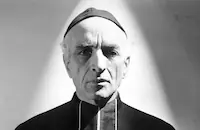Song of India

Brief Synopsis
Cast & Crew
Albert S. Rogell
Sabu
Gail Russell
Turhan Bey
Anthony Caruso
Aminta Dyne
Film Details
Technical Specs

Synopsis
With plans to establish a modern zoo in their native province in India, university-educated Prince Gopal and his fiancée, Princess Tara, set out for the Combi jungle to capture and import big game. Accompanying Gopal and Tara on their venture into the forbidden Combi game reserve is Aunt Shayla, who is brought along to chaperone the unmarried couple. While Gopal and Tara dismiss as superstitious nonsense the Combi natives' belief that a human must die for every animal killed, Ramdar, known as the Prince of the Jungle, believes the danger to be real. Ramdar arrives at the Combi village at about the same time as Gopal and Tara, and immediately begins releasing the captured animals. After freeing many of the animals, Ramdar explains to Gopal and Tara that the animals are harmless and should be left alone. To prove his point, Ramdar demonstrates how even the tiger can be tamed. Placed in a cage alone with the tiger, Ramdar shows Gopal and Tara how easily the animal can be subdued. During the demonstration, Ramdar tries to free the tiger, but Gopal fires his gun and wounds the animal. Ramdar eventually agrees to abide by Tara's wishes that he not let any more animals loose when she persuades him that by doing so Ramdar not only puts the lives of her party in danger, but also puts his reputation in danger. On the pretext of offering a token of his friendship to Tara, Ramdar tells her that can lead her to the valuable jewels of the Rajahs of Hakwar, and that she should accompany him to the site. Ramdar's true motives soon become clear, however, when he leaves a note behind for Gopal saying that Tara is his hostage and that he will release her only when the captured animals have been freed. When Gopal discovers the note, he orders Ramdar's capture and execution, and then announces that if Tara is not returned by nightfall, he will kill every third son in the village and burn it to the ground. Once Ramdar and Tara reach the barren cliff that Ramdar calls his family palace, he admits that he took her as a hostage, and explains that the "jewels" he told her about are actually the moon, sky, sun and stars. Tara soon begins to understand and appreciate Ramdar's love of nature. As Ramdar and Tara climb further up a dangerous cliff, Ramdar is attacked by the tiger that Gopal wounded. Ramdar manages to escape without injury, and the tiger scurries off. The tiger returns however, when Gopal arrives with his soldiers. Ramdar quickly disarms Gopal, who is then attacked by the tiger and sent over the side of the cliff to his death. Having converted Tara from a hunter to a nature lover, Ramdar marries her and shares the throne of the Combi jungle with her.

Director
Albert S. Rogell
Cast

Sabu

Gail Russell

Turhan Bey

Anthony Caruso
Aminta Dyne

Fritz Leiber
Trevor Bardette

Robert H. Barrat
David Bond
Rodric Redwing
Ted Hecht
Crew
Art Arthur
Arthur S. Black
Sturges Carne
Sidney Clifford
Lee Frederic
Henry Freulich
Jack Goodrich
Alexander Laszlo
Charles Nelson
Jerome Odlum
Kenneth Perkins
Manning J. Post
Albert S. Rogell
M. W. Stoloff

Videos
Movie Clip



Hosted Intro
Film Details
Technical Specs

Articles
Song of India
Song of India, produced and directed by Albert S. Rogell, is a whimsical adventure that should appeal to audiences of all ages. It features a parade of exotic animals and flora that transform the Columbia Studios backlot into a beautiful virtual jungle. Russian composer Nikolai Rimsky-Korsakov's famous piece "Song of India" is also featured in the film's musical score.
Original prints of Song of India were shown in sepia tone upon its initial release. Rogell was a prolific B-movie maker with over 100 films to his credit and Song of India was one of his final features before he ventured into television production.
Producer: Albert S. Rogell
Director: Albert S. Rogell
Screenplay: Art Arthur, Kenneth Perkins
Cinematography: Henry Freulich
Art Direction: Sturges Carne
Music: Alexander Laszlo
Film Editing: Charles Nelson
Cast: Sabu (Ramdar), Gail Russell (Princess Tara), Turhan Bey (Gopal), Anthony Caruso (Major Doraj), Aminta Dyne (Aunt Shayla), Fritz Leiber (Nanaram), Trevor Bardette (Rewa), Robert H. Barrat (Maharajah of Ramjat)
BW-77m.
by Andrea Passafiume

Song of India
Quotes
Trivia
'Cooper, Marilyn' was called in to replace Gail Russell (I), who was taken ill. This led to Marilyn meeting her future husband Sabu (I).
Notes
Onscreen credits note that the musical score was "based on N. Rimsky-Korsakov's 'Song of India.'" March and April 1948 Hollywood Reporter news items note that the picture, which was to be distributed through Universal-International, was originally scheduled to be shot in Cinecolor, Harry Cushing was to be the producer and Barbara Bushman was to be tested for a role. Bushman's appearance in the completed film has not been confirmed, however. The news items also report that the plans for the picture called for "extensive location shooting" at Sherwood Lake, CA. Gail Russell was borrowed from Paramount Studios for the production. According to a May 1948 Hollywood Reporter news item, Columbia agreed to distribute the film as part of a one-picture distribution deal with Albert Rogell's independent production company, Gibralter Pictures, but Gibralter is not listed on screen or in reviews.















